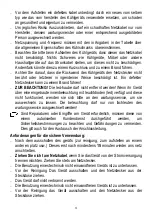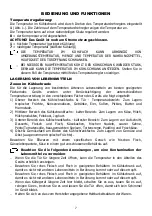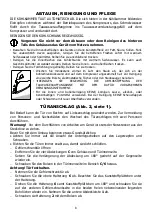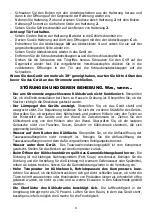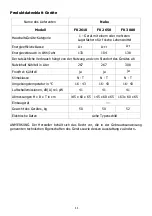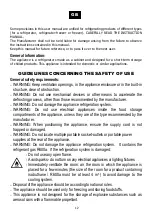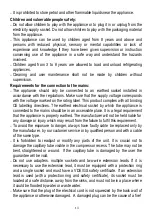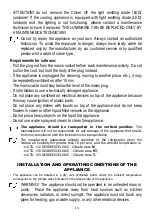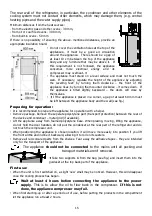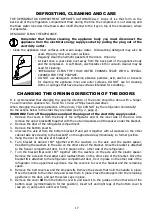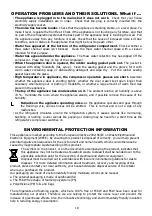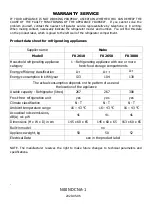
18
OPERATION PROBLEMS AND THEIR SOLUTIONS. What if …
•
The appliance is plugged in to the mains but it does not work.
Check that your house
electricity supply installations are in order. Check that the plug is correctly inserted into the
electricity supply socket.
•
The noise has become louder.
Check that the appliance is standing stable, on a level place. To
make it level, regulate the front feet. Check if the appliance is not touching any furniture, and that
no part of the refrigeration system at the back part of the appliance body is touching the wall. Pull
the appliance away from any furniture or walls. Check that the cause of increased noise isn’t due
to bottles, cans or dishes in the appliance that might be touching each other.
•
Water has appeared at the bottom of the refrigerator compartment.
Check whether a
thaw water channel space isn’t blocked. Clean the thaw water channel space with a cleaner
intended for that purpose.
•
Water has appeared under the appliance.
The thaw water collection tray has slipped off the
compressor. Place the tray on top of the compressor.
•
When the appliance door is opened, the rubber sealing gasket pulls out.
The gasket is
smeared with sticky foodstuffs (fat, syrup). Clean the sealing gasket and the groove for it with
warm water containing soap or dishwashing detergent and wipe dry. Put the rubber sealing
gasket back into the place.
•
High temperature in appliance, the compressor operation pauses are short.
Ascertain
whether the appliance door is shutting tightly, whether the door wasn’t kept open longer than
necessary when taking out or putting in foodstuffs, or whether a large amount of warm food was
placed in the appliance.
•
The top of the appliance has condensation on it.
The ambient relative air humidity is above
70 %. Ventilate the room where the appliance stands, and if possible remove the cause of the
humidity.
Remarks on the appliance operating noise.
As the appliance operates and goes through
the freezing cycle, various noises will be emitted. This is normal and is not a sign of any
malfunction.
•
As the refrigerant circulates around the refrigeration system, it causes sounds like murmuring,
bubbling, or rustling. Louder sounds like popping or clicking may be heard for a short time as the
refrigerator’s compressor switches on
ENVIRONMENTAL PROTECTION INFORMATION
This appliance is marked according to the European directive 2002/96/EC on Waste Electrical and
Electronic Equipment (WEEE). By ensuring this product is disposed of correctly, you will help prevent
potential negative consequences for the environment and human health, which could otherwise be
caused by inappropriate waste handling of this product.
The symbol on the product, or on the documents accompanying the product, indicates that
this appliance may not be treated as household waste. Instead it shall be handed over to the
applicable collection point for the recycling of electrical and electronic equipment.
Disposal must be carried out in accordance with local environmental regulations for waste
disposal. For more detailed information about treatment, recovery and recycling of this
product, please contact your local authority, your household waste disposal service or the retailer
where you purchased the product.
Our packaging are made of environmentally friendly materials, which can be reused:
● The external packaging is made of cardboard/foil
● The FCKW free shape of foamed polystyrene (PS)
● Polyethylene (PE) foils and bags
The refrigerants and foaming agents, which are 100% free of FCKW and FKW have been used for
manufacturing our product. Therefore we are helping to protect the ozone layer and prevent the
increase of greenhouse effects. Also, the innovative technology and environmentally friendly insulation
help in reducing energy consumption.

